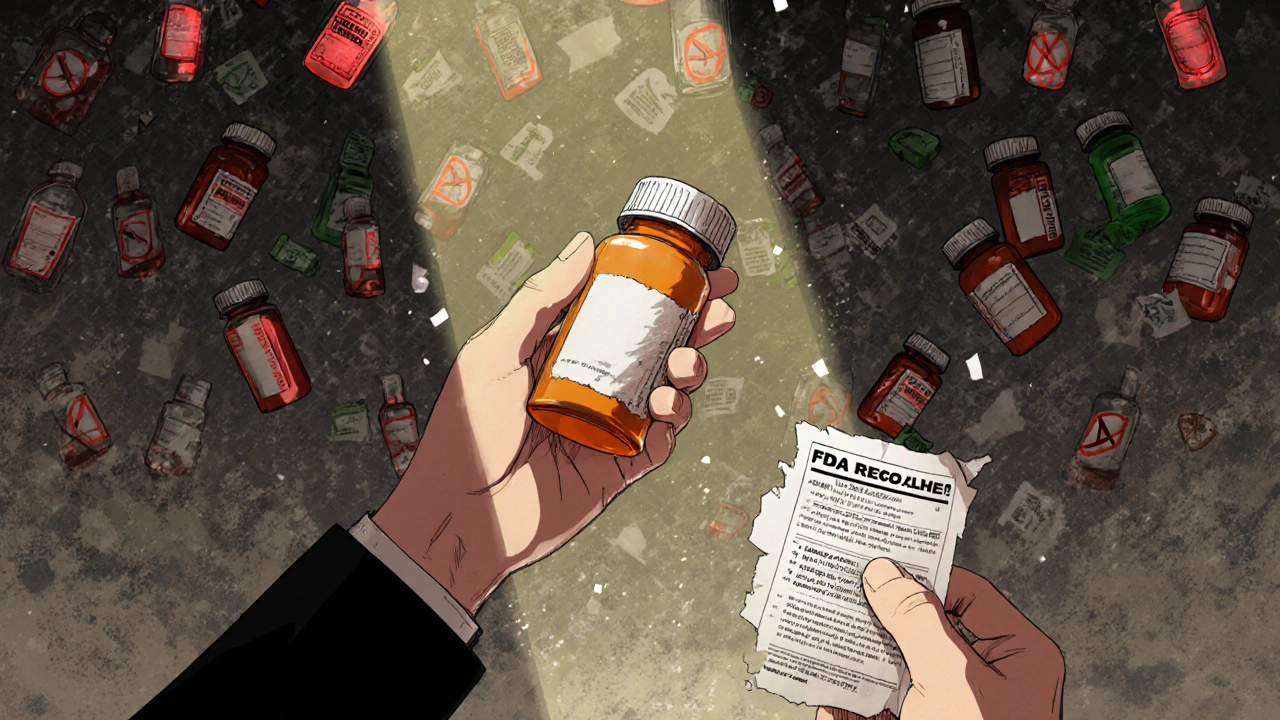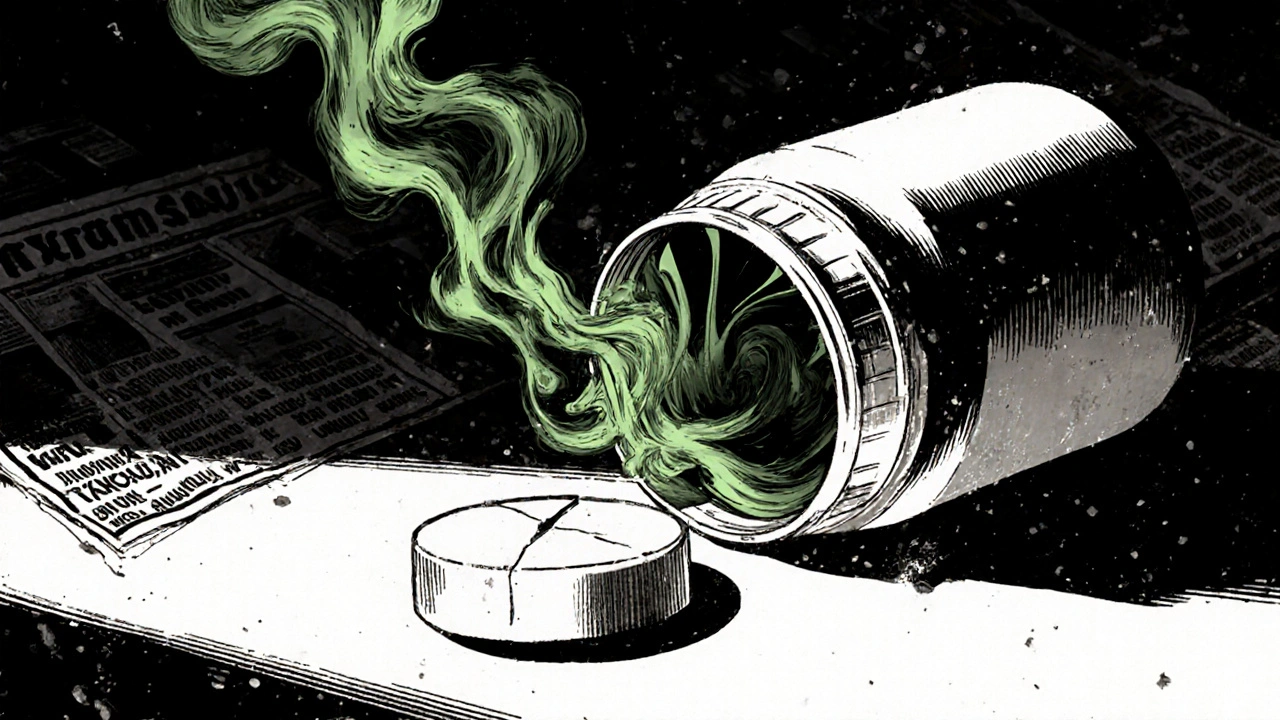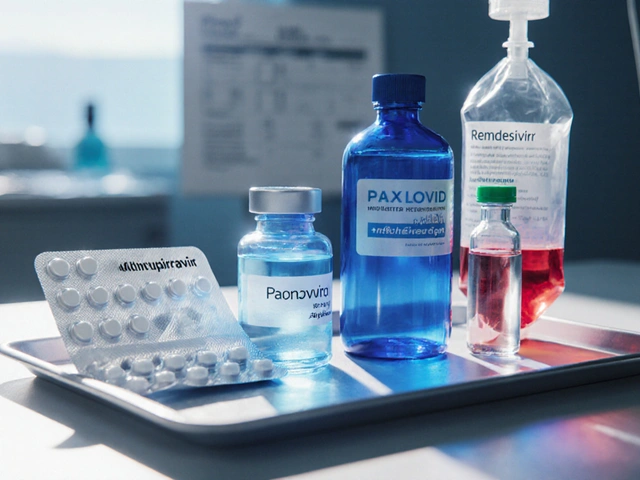When you pick up a generic pill for high blood pressure or diabetes, you expect it to work just like the brand-name version-same active ingredient, same effect, same price. But since 2018, a quiet crisis has shaken that trust. Trace amounts of cancer-causing chemicals called nitrosamines have turned up in widely used generic medications, leading to dozens of recalls, supply shortages, and a scramble by manufacturers to fix what went wrong.
How Nitrosamines Sneaked Into Your Medicine
Nitrosamines aren’t added on purpose. They form by accident during manufacturing. When certain chemicals-like nitrites or amines-react under heat, pressure, or even during storage, they create compounds like NDMA (N-Nitrosodimethylamine) and NDEA (N-Nitrosodiethylamine). These are classified as probable human carcinogens by the International Agency for Research on Cancer. Even tiny amounts, measured in nanograms per day, can increase cancer risk over time. The first big red flag came in 2018 when the FDA found NDMA in valsartan, a common blood pressure med. That single discovery triggered a chain reaction. Within months, similar contamination showed up in losartan, ranitidine (Zantac), metformin, and later in antidepressants like duloxetine and smoking cessation drugs like varenicline. By mid-2025, the FDA had issued over 500 recalls tied to nitrosamine levels in active ingredients alone. That’s not a typo-five hundred recalls. Most were for generic versions of drugs millions of people rely on daily. What made this worse? The contamination wasn’t always from the active ingredient. In 2022, the FDA started finding nitrosamines linked to packaging materials-blister packs, bottle liners, even adhesives. Some of these materials contained secondary amines that reacted with nitrites in the environment, creating nitrosamines inside the sealed container. A 2024 case study showed an antibiotic tablet with all batches exceeding the safe limit of 1,500 ng/day, not because of the API, but because of the packaging film.Who Got Hit the Hardest?
The list of affected drugs is long, but a few categories took the biggest hits:- ARBs (Angiotensin II Receptor Blockers): Valsartan, losartan, irbesartan-these blood pressure drugs were ground zero for the crisis.
- Ranitidine: Zantac was pulled from shelves globally after NDMA was found even in unopened bottles.
- Metformin: The most common diabetes drug in the U.S. had multiple recalls between 2020 and 2023.
- Duloxetine and Varenicline: Antidepressants and smoking cessation aids were found to contain NDSRIs (nitrosamine drug substance-related impurities), which are harder to detect and regulate.
The Global Response: FDA vs. Everyone Else
The U.S. moved fastest-and hardest. While the European Medicines Agency (EMA) issued 32 recalls through mid-2025, and Health Canada, the UK’s MHRA, and Japan’s PMDA each reported between 5 and 15, the FDA’s actions were far more aggressive. In August 2023, the FDA introduced compound-specific acceptable intake limits for NDSRIs, something the EMA didn’t require. That meant manufacturers had to test for dozens of unique nitrosamine variants, not just the common ones. The original deadline for full compliance with these new rules was August 1, 2025. But in June 2025, the FDA quietly changed course. Instead of requiring full reformulation and testing by that date, they now accept detailed progress reports. Manufacturers can submit plans showing how they’re identifying root causes, redesigning processes, or switching suppliers-and they’ll have more time to finish. This shift wasn’t a sign of weakness. It was a recognition of reality. As Lilun Murphy, director of the FDA’s Office of Generic Drugs, warned in October 2025, nitrosamine mitigation isn’t a simple fix. It’s a multi-year, multi-million-dollar overhaul.
What It Costs to Fix
A mid-sized generic manufacturer might spend $500,000 to $2 million a year just on nitrosamine testing and controls. That’s not just lab equipment-it’s hiring chemists, revalidating entire production lines, auditing suppliers, and redesigning packaging. One company spent 18 months and $2 million to fix nitrosamine levels in their metformin line. Another had to replace the magnesium stearate in three different ARB products because a single supplier’s batch contained hidden nitrites. Smaller manufacturers are struggling. Many don’t have the resources to run LC-MS/MS testing-equipment that can detect nitrosamines at 0.3 nanograms per milliliter. Some are being forced out of the market. Evaluate Pharma’s 2025 analysis found that compliance costs have cut generic drug profit margins by 3 to 5 percentage points industry-wide. The winners? Big players like Teva, Fresenius Kabi, and Sun Pharmaceutical. They had the labs, the teams, and the capital to act early. One FDA case study highlighted a manufacturer that caught a potential nitrosamine risk during development, switched excipients before launch, and avoided a recall entirely. That’s now the gold standard.Why This Isn’t Over
The FDA hasn’t stopped. In fact, they’re expanding the scope. New drug classes are being added to the watchlist. Analysts expect nitrosamine testing to soon apply to antibiotics, antivirals, and even some over-the-counter meds. The agency is also tightening requirements for stability testing-how long a reformulated drug stays safe under real-world conditions like heat and humidity. Manufacturers who ignored the warnings are now facing Class II recalls-meaning the drugs are pulled immediately from shelves. And no new generic drug will get FDA approval unless it meets the current nitrosamine guidelines. That’s a huge barrier to entry. The deeper problem? Nitrosamines form in unpredictable ways. Fix one pathway, and another pops up. One Reddit user-a process engineer at a generic maker-wrote in August 2025: “We fixed the solvent issue, then the drying step created a new nitrosamine. Then the tablet coating did. We’re on our fourth reformulation.”
What You Should Do
If you take a generic drug, here’s what matters:- Don’t panic. The risk from trace nitrosamines is low for short-term use. It’s about long-term, daily exposure.
- Check the FDA’s current recall list-it’s updated weekly.
- If your medication was recalled, your pharmacist will notify you. Switching to another brand or batch is safe-just don’t stop taking your medicine without talking to your doctor.
- Ask your pharmacist: “Is this batch tested for nitrosamines?” Many now label that info on the bottle.
What’s Next?
The FDA’s June 2025 update signals a new phase: not punishment, but partnership. They’re asking manufacturers to report progress, not just compliance. That means more transparency, more collaboration, and more time to get it right. For patients, that means fewer sudden recalls. For manufacturers, it means a fighting chance to survive. And for the system as a whole, it’s a lesson: when safety is treated as an afterthought, it becomes a crisis. When it’s built in from the start, it becomes standard.What are nitrosamines and why are they dangerous?
Nitrosamines are chemical compounds that can form during drug manufacturing or storage. They are classified as probable human carcinogens by the International Agency for Research on Cancer (IARC). Even tiny amounts-measured in nanograms per day-can increase cancer risk over long-term exposure. Common types found in drugs include NDMA, NDEA, and NDSRIs like N-nitroso-varenicline.
Which generic drugs have been recalled for nitrosamine contamination?
Major recalls have affected blood pressure medications like valsartan, losartan, and irbesartan; the heartburn drug ranitidine (Zantac); the diabetes drug metformin; the antidepressant duloxetine; and the smoking cessation drug varenicline. Over 500 recalls have been issued since 2018, mostly targeting generic versions of these drugs.
Is it safe to keep taking my generic medication?
Yes-if your drug hasn’t been recalled. The risk from trace nitrosamines is very low for most people, especially if you’ve only been taking the medication for a short time. The real concern is long-term daily exposure. Check the FDA’s recall list or ask your pharmacist if your batch has been tested. Never stop your medication without consulting your doctor.
Why did the FDA change the August 2025 deadline?
The FDA realized that fixing nitrosamine contamination isn’t a quick fix. It requires redesigning manufacturing processes, sourcing new ingredients, and running stability tests that take months or years. The original deadline was unrealistic for smaller manufacturers. Now, companies can submit progress reports instead of full compliance by August 1, 2025, giving them more time to fix the root causes safely.
Can packaging cause nitrosamine contamination?
Yes. Starting in 2022, the FDA found that some blister packs, bottle liners, and adhesives contained amines or other materials that reacted with nitrites in the environment to form nitrosamines inside the sealed container. This shifted the focus from just the active ingredient to the entire product system-including packaging.
How are manufacturers testing for nitrosamines?
Manufacturers use highly sensitive lab equipment called LC-MS/MS (liquid chromatography-tandem mass spectrometry) to detect nitrosamines at levels as low as 0.3 nanograms per milliliter. This is far below what older methods could catch. Testing is now required for every batch of high-risk drugs, and many companies run additional tests during development to prevent problems before launch.
Are brand-name drugs affected by nitrosamine contamination?
Rarely. Brand-name manufacturers often control their entire supply chain and use newer, more controlled processes. When contamination was found in brand-name drugs, it was usually because they used the same active ingredient as generics. The issue isn’t brand vs. generic-it’s manufacturing quality and oversight.
Will nitrosamine testing apply to other types of drugs in the future?
Yes. Experts predict nitrosamine testing will expand to antibiotics, antivirals, and even some over-the-counter drugs. The FDA’s approach since 2018 has been to tackle one class at a time-starting with ARBs, then ranitidine, then metformin. The next likely targets are drugs with secondary amines in their chemical structure, which are more prone to forming nitrosamines.






Don Angel
November 19, 2025 at 19:28
So, I’ve been on losartan for 7 years. My pharmacist just texted me last week that my new batch was tested and cleared. I didn’t even know they were testing for this stuff. Honestly? I’m relieved. But also… why did it take this long for anyone to care? I’ve been swallowing these pills like candy, and now I’m supposed to trust that the next bottle won’t be a cancer lottery? 😅